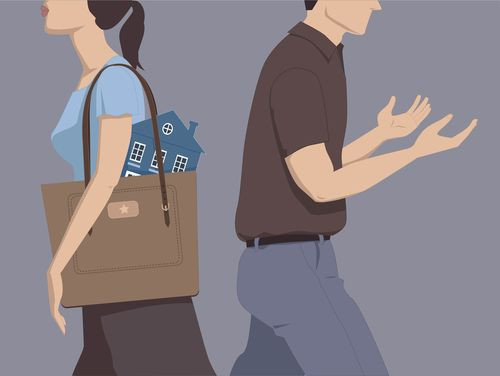Can Divorce Be Contagious? Theory Of ‘Divorce Clustering’ Says You’ll Lose Interest When Friends Do

We like to think, perhaps naïvely, that romance is a cozy bubble of safety. Our eyes are closed, our ears drowning out the rest of the world, and our thoughts totally focused on making the other person happy. Psychologists would like to pop that bubble.
A large body of recent research is beginning to suggest that divorce, much like the magnetism of marriage, spreads like a disease around a given social circle. When a couple finally calls it quits, the friends in each surrounding posse will feel compelled to end their relationship, too. From there, the desire ripples with an increasingly softer effect, until the last person — a friend of a friend of a friend, or perhaps an estranged second cousin — can still enjoy the fragile comfort of their own bubble.
The theory goes by the formal name of “divorce clustering.” It falls under the umbrella label of “social contagions,” which themselves refer to patterns of behavior that propagate along a string of friends, families, colleagues, and close acquaintances due to feelings of closeness and like-minded mentalities. Divorce clustering is one type of social contagion; others include the familiar draw to get married when one friend ties the knot, the sudden desire to have kids whenever relatives or friends take the lead, and even obesity in elementary schools.
Researchers from Harvard, Brown, and UC San Diego put their minds together to research divorce clustering in 2010. Their study included 5,209 men and women between the ages of 30 and 62 in the town of Framingham, Mass. An otherwise nondescript New England town, Framingham was chosen in 1948 as the site for one of the nation’s longest-running longitudinal studies, which has come to be known as the Framingham Heart Study.
The study began as a way to research heart disease. It collected swaths of data on the town’s residents, including their health information, family ties, circles of friends, and among others, marriage and divorce rates. It’s a comprehensiveness that’s made for some unique data mining.
In 1971, for instance, follow-up studies were able to track the second generation of residents in comparison to the first. And today, in a town of some 67,000, researchers can know down nearly to the individual person who got divorced and when. In fact, participants in the researchers’ latest study each named, on average, 11 other participants in their list of family and friends.
“The contagion of divorce can spread through a social network like a rumor, affecting friends up to two degrees removed,” the research team wrote in their report. After analyzing the data, they found participants whose immediate friend got divorced were 75 percent more likely to end their own relationships. Secondary friends (the friend of a friend) were 33 percent more likely. Any further removed and the effect was negligible.
Specifically, the children of the original 1948 cast of subjects were divorced roughly nine percent of the time. When a friend of those subjects got divorced, the rate rose to 16 percent. Friends of a friend were typically divorced 12 percent of the time. The takeaway, the team concluded, was that helping a friend work through a rocky relationship doesn’t always have to be altruistic. It may also serve to cover your own back.
“We suggest that attending to the health of one’s friends’ marriages might serve to support and enhance the durability of one’s own relationship,” they explained. “Although the evidence we present here is limited to a single network…marriages endure within the context of communities of healthy relationships and within the context of social networks that encourage and support such unions.”



























